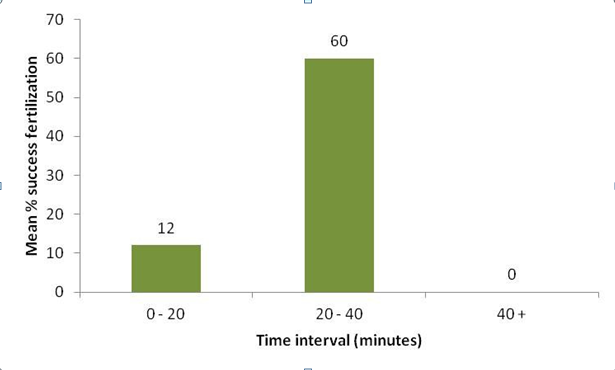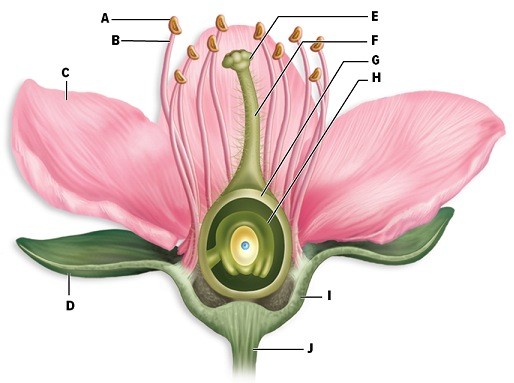Hanlon, Naud, and their colleagues analyzed DNA among mating males and fertilized eggs of Sepia apama cuttlefish, after mating had been observed. Examine their results in this figure. Which conclusion is supported by these results?

A. There is no reproductive value for a male to guard the female for less than 20 minutes.
B. A male guarding a female 20 to 40 minutes from subsequent mating attempts of other males is the most successful behavior.
C. Smaller males that mimic females are more successful in producing fertilized eggs.
D. Mimicry of females by smaller males does not result in any successful production of fertilized eggs.
E. Guarding females for more than 40 minutes prevents females from sorting and fertilizing sperm and eggs before the eggs die.
B. A male guarding a female 20 to 40 minutes from subsequent mating attempts of other males is the most successful behavior.
You might also like to view...
The type strain is the most representative strain of a particular species.
Answer the following statement true (T) or false (F)
What kind of reaction produces large molecules by
linking small molecules? a. oxidation b. reduction c. condensation d. hydrolysis e. decarboxylation
Identify the labeled parts of the flower:  A. ________ F.________B. ________ G. ________C. ________ H. ________D. ________ I. ________E. ________ J. ________
A. ________ F.________B. ________ G. ________C. ________ H. ________D. ________ I. ________E. ________ J. ________
What will be an ideal response?
Experiments have been done to determine the infective dose of a specific pathogen in animals with normal microbiota and gnotobiotic animals. Predict how the infective dose for gnotobiotic animals is expected to compare to the infective dose of animals with normal microbiota.
A. The infective does would be higher for the gnotobiotic animals. B. The infective dose would be the same for both groups of animals. C. The infective dose would be lower for the gnotobiotic animals.